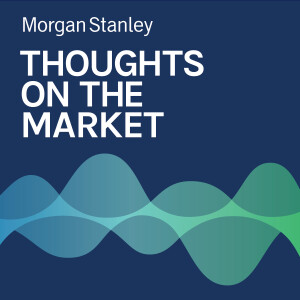
Andrew Sheets: What Will the End of Rate Hikes Mean?
 2022-12-16
2022-12-16
As cross-asset performance has continued to be weak, there is hope that the end of the Fed’s rate hiking cycle could give markets the boost they need, but does history agree with these investor’s hopes?
----- Transcript -----
Welcome to Thoughts on the Market. I'm Andrew Sheets, Chief Cross-Asset Strategist for Morgan Stanley. Along with my colleagues, bringing you a variety of perspectives, I'll be talking about trends across the global investment landscape and how we put those ideas together. It's Friday, December 16th, at 3 p.m. in London.
We expect the Federal Reserve to make its last rate hike in the first quarter of next year. What does that mean? Aggressive rate increases from the Fed this year have corresponded to weak cross-asset performance, leading to a lot of hope that the end of these rate hikes will provide a major boost to markets, especially to riskier, more volatile assets like stocks and high yield bonds.
But the lessons of history are more complicated. While on average, both stocks and bonds do well once the Fed stops raising rates, there's an important catch. Stock performance is weaker in the handful of instances where the Fed has stopped while short term yields are higher than long term yields. That so-called inverted yield curve is exactly what we see today and suggests it's not so straightforward to say that the end of rate hikes means that stocks outperform.
Specifically, we can identify 11 instances since 1980 when the Federal Reserve was raising rates and then stopped. In most of these instances, the yield curve was flat and slightly upward sloping, which means 2 year yields were a little bit lower than 10 year yields. That means the market thought that interest rates at the time of the last Fed rate hike could stay at those levels for some time, applying that they were in a somewhat stable equilibrium and that the economy wouldn't see major change. Unsurprisingly, the markets seemed to like that stability, with global equities up about 15% over the next year in these instances.
But there's another, somewhat rare set of observations where the last Fed rate hike has occurred with short term interest rates higher than expected rates over the long term. That happened in 1980, 1981, 1989, and the year 2000, and suggests that the market at that time thought that interest rates were not in a stable equilibrium, would not stay at current levels, and might need to adjust down rather significantly. That's more consistent of bond markets being concerned about slower growth. And in these four instances, global equity markets did much worse, falling about 3% over the following 12 month period.
We see a couple of important implications for that. First, as we sit today, the yield curve is inverted, suggesting that that rarer but more challenging set of scenarios could be at work. My colleague Mike Wilson, Morgan Stanley's Chief U.S. Equity Strategist and CIO, is forecasting S&P 500 to end 2023 at similar levels to where it is today, suggesting that the equity outlook isn't as simple as the market rallying after the Fed stops raising rates.
Secondly, for bond markets, returns are more consistently strong after the last Fed rate hike, whether the yield curve is inverted or not. From a cross-asset perspective, we continue to prefer investment grade bonds over equities in both the U.S. and Europe.
Questions of when the Fed stops raising rates and what this means remains a major debate for the year ahead. While an end to rate hikes is often a broad based positive, this impact isn't as strong when the yield curve is inverted like it is today.
Thanks for listening. Subscribe to Thoughts on the Market on Apple Podcasts, or wherever you listen, and leave us a review. We'd love to hear from you.
More Episodes
 2024-08-13
2024-08-13
 2024-08-12
2024-08-12
 2024-08-09
2024-08-09
 2024-08-08
2024-08-08
 2024-08-05
2024-08-05
 2024-08-02
2024-08-02
 2024-08-02
2024-08-02
 2024-07-31
2024-07-31
 2024-07-30
2024-07-30
 2024-07-29
2024-07-29
 2024-07-26
2024-07-26
 2024-07-25
2024-07-25
 2024-07-24
2024-07-24
 2024-07-23
2024-07-23
 2024-07-22
2024-07-22
 2024-07-19
2024-07-19
Create your
podcast in
minutes
- Full-featured podcast site
- Unlimited storage and bandwidth
- Comprehensive podcast stats
- Distribute to Apple Podcasts, Spotify, and more
- Make money with your podcast
It is Free
- Privacy Policy
- Cookie Policy
- Terms of Use
- Consent Preferences
- Copyright © 2015-2024 Podbean.com




